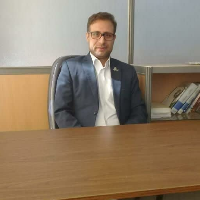Study of the Image Schemas of the Holy Qur’an Based on Johnson's Theory: the Case of Surah As-Saffat
Cognitive linguistics is one of the newest categories of linguistics that has established a relationship between language and human thought, and includes various theories including conceptual metaphor, image schemas, etc. The theory of image schemas, developed by Lakoff and Johnson, examines the ways in which meaning and perception are derived from and relevant to our physical experience. The human mind understands the meaning of schemas without the need for complex processing and training. In other words, in an image schema, sensory experiences are mapped to conceptual structures, and they can be used to talk about abstract domains. The present descriptive-analytical study aimed to investigate the meaning of image schemas of the Holy Qur’an. For this purpose, using Johnson's theory, the image schemas of Surah As-Saffat were extracted and analyzed. The results indicate that the highest frequency is related to the force schema (53%), and the frequency of the transformational schema (24%) and the spatial schema (23%) are almost the same. This is in line with the purpose of this Surah which is informing about the hereafter and giving a warning to the servants of God. Also, in the spatial schema, the preposition "fi", repeated 15 times, and in the transformational schema, the preposition "ila", repeated in nine cases, had the highest frequency. These schemas have been created to help the readers better understand non-empirical concepts, such as heaven, hell, infidelity, faith, reward and punishment, the power and will of God, and so on.
-
A study of the term “Yam” in the Holy Qur’an from the perspective of the Semitic languages
, Fateme Zarei *
A Quarerly Journal Lesan - on Mobeen - on, -
The aesthetics of fire and candle in the poetry of AlSarī al-Raffā based the phenomenology of Gaston Bachelard
Houman Nazemian, Ali Asvadi, Zahra Izadi *
Iranian Association of Arabic Language and Literature,



